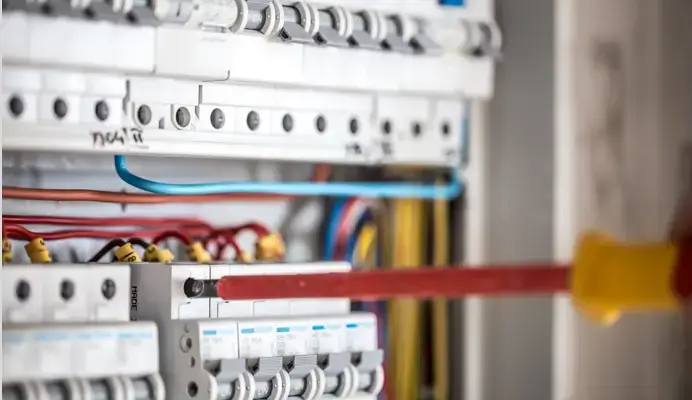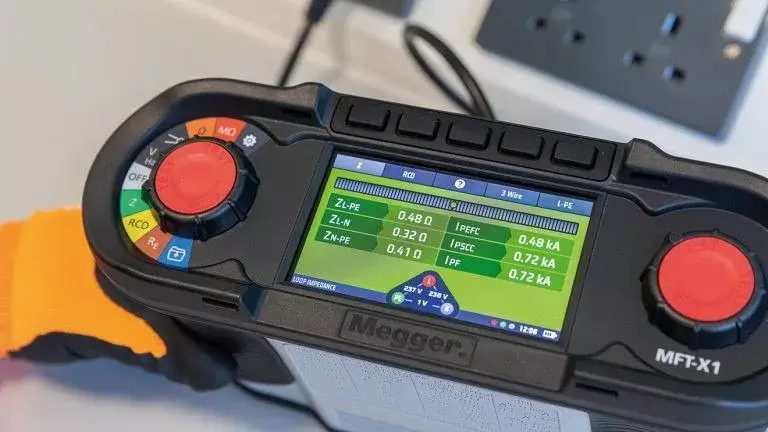What is portable appliance testing?
Portable Appliance Testing or PAT Testing is the process of verifying the electrical appliances for safety through a series of visual and electronic inspections. Its main purpose is to prevent any electrical accidents in the workplace.
Please note most electrical safety defects can be found by visual examination but some types of defects can only be found by testing. This test includes earth continuity, lead polarity, and the insulation resistance checks.
How frequently do I need to test my electrical appliances?
The frequency of inspection and testing depends on the type of equipment and the environment it is used in. For example, a power tool used on a construction site should be examined and tested much more frequently than a lamp in a hotel bedroom.
Do I need to keep records of testing and should I label any appliances tested?
There is no legal requirement to label equipment that has been inspected or tested.
Do I need to test new equipment?
New equipment is normally supplied in a very safe condition and should not require a formal portable appliance inspection or test. However, a simple visual check is recommended to verify the item is not damaged.
Why do I need to have my appliances tested?
The best way of ensuring that your appliances are safe is to have a PAT test carried out on them. This is a good way for landlords to ensure that they are meeting their legal obligations to maintain high standards of electrical safety in their rented property.
What is a PAT test certificate?
A PAT test certificate is provided to a business owner by the PAT testing specialist. This can be done once their portable appliances have been tested. It can be used to prove compliance to regulators, insurers, customers and staff.
Is PAT testing a legal requirement?
PAT testing is not, in itself, a legal requirement or obligation.
What are ‘electrical classes’ in PAT testing?
Electrical appliances are mainly categorized as Class 1, 2 or 3, with Class 1 being the most dangerous and Class 3 the least dangerous.
What are the ‘categories’ of electrical appliance in PAT testing?
As mentioned in section 2, there are 7 categories of electrical appliance which definitely require some level of testing, either a simple visual inspection, or a full PAT test:
- Fixed appliances
- Stationary appliances
- IT appliances
- Moveable appliances
- Portable appliances
- Cables and chargers
- Hand Held appliances
Do I need to keep a record of PAT tests?
There is no legal requirement to keep a record of your electrical testing, but it is strongly recommended that you do to prove your compliance to regulators, insurers and customers. This will help you to protect your business.
Can you PAT test with a multimeter?
No. A PAT test can only be carried out by a portable appliance tester. The voltage on a multimeter is too low to be able to carry out the full test required for a PAT test. There is a danger it could ‘pass’ a faulty appliance. It is recommended to use a qualified PAT tester with a professional portable appliance tester designed for the job.
Can a local authority require me to perform portable appliance testing?
Yes, any selective, mandatory or additional license must include a condition requiring the regular testing of the portable appliances and furniture for safety, as well as a declaration as to the safety of these items.
What should I be looking for on my visual inspection?
There are a number of things that you should pay attention to with visual inspections such as:
- fraying, cuts or heavy scuffing to the lead
- damage to the plug such as bent pins
- tape applied to the lead to join leads together
- visible wires where the lead joins the plug
- loose parts or screws
- signs of overheating, such as burn marks or staining on the plug
- equipment being stored in dusty or wet environments
- cables trapped under furniture or in floor boxes
How often should portable appliances be PAT tested?
Portable equipment such as extension leads should be tested every 12 months.
Does a fridge need to be PAT tested?
Does equipment that isn’t portable need PAT testing? Yes, and this is where the term ‘PAT testing’ (portable appliance testing) can be misleading. You definitely need to test any large pieces of equipment that are hard to move like vending machines and refrigerators.
What equipment does not need PAT testing?
Any cordless power tool would not need to be PAT tested.
Can you PAT test without a certificate? Do I need a License to PAT test? Do You Need a Qualification for PAT Test?
Technically anyone can carry out PAT testing, but they must have the necessary training to deem them suitable for carrying out the work.
Can you sell electrical items without PAT test?
Yes – PAT testing does appliy to all portable electrics, regardless of whether they are new or secondhand.
What would fail a PAT test?
- Please see the below reasons why the PAT Testing may fail:
- The incorrect fuse has been fitted.
- The cable or plug is damaged or worn.
- The equipment fails to pass an Earth resistance test, polarity test or insulation resistance check.
- The equipment has been recalled or is counterfeit.





